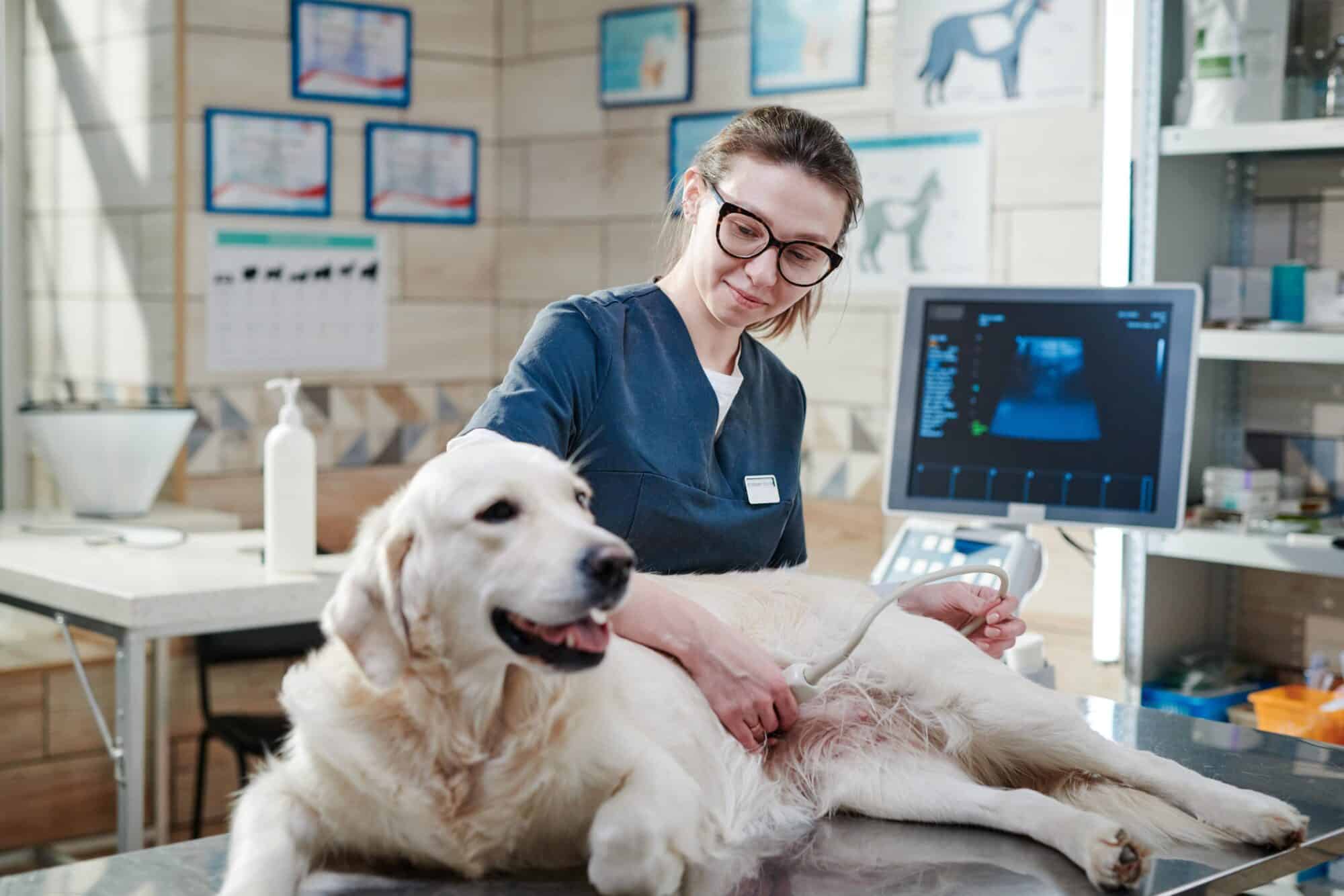All About Veterinary Ultrasounds

Veterinary medicine continues to evolve, largely because of advancements in technology. Diagnostic capabilities not only help us detect disease early on, but can positively influence a pet’s treatment plan and recovery as well. The more we understand a pet’s condition and overall health, the more effective we can be. Ultrasound imaging can quickly and accurately confirm a pet’s condition without restraint or sedation, making it one of our most indispensable tools.
Incredible Images
Veterinary ultrasounds employ sound waves imperceptible to the human ear. The sound waves bounce off the precise area we’re concerned about, resulting in an image of black (fluid) and gray (tissue). Veterinary ultrasounds are often paired with digital radiographs to help us form the clearest possible picture of a pet’s condition and health. Additionally, ultrasounds help to guide needles for tissue biopsies, detect tumors, and determine the viability of a pregnancy and the number of fetuses in utero.
Mapping It Out
The real-time visualizations of veterinary ultrasounds help us understand the structure, size and movement of the body’s organs including the kidneys, pancreas, gallbladder, and liver. What’s more, ultrasounds can help with the following:
- Foreign body ingestion and obstruction
- Cardiac function (in conjunction with echocardiogram)
- Arterial blood flow
Veterinary ultrasounds can be a next step after abnormal blood or urine test results. Depending on the labs, we may pursue an ultrasound to determine the health of the lymph nodes, spleen, urinary tract, bladder, and other areas.
Canine and Feline Ultrasound
Amazingly, veterinary ultrasounds can also be used to examine the body’s soft tissues, such as the eyes, ligaments, tendons, and thyroid gland. In the case of an emergency situation like a suspected internal hemorrhage or compromised respiration, ultrasounds can be utilized to provide a picture of the abdomen and chest. Consequently, ultrasounds play a critical role in diagnosing and treating a pet’s emergency illness or injury.
How to Prepare
While owners can’t always prepare for a veterinary ultrasound, there are times when this procedure is planned and scheduled. We will give you clear instructions regarding water and food intake prior to coming in. Most pets remain still enough to gain clear pictures of the area in question, but if they are in pain or stressed, they may require mild sedation (this is necessary during biopsies).
We receive the ultrasound images in real time, but may need to consult with a radiologist if needed.
Diagnostic Imaging for Pets
In addition to our in-house lab and digital radiographs, veterinary ultrasounds provide vital information. Veterinary ultrasounds are:
- Affordable
- Accurate without the need for medication for anesthesia
- Able to be repeated for follow up care
- Non-invasive
- Critical to prepare for surgery or biopsy, and instrumental during procedures
If you have further questions about veterinary ultrasounds and other diagnostics, please call Jenison Animal Hospital at (616) 457-9200. Our staff is always happy to assist you.
